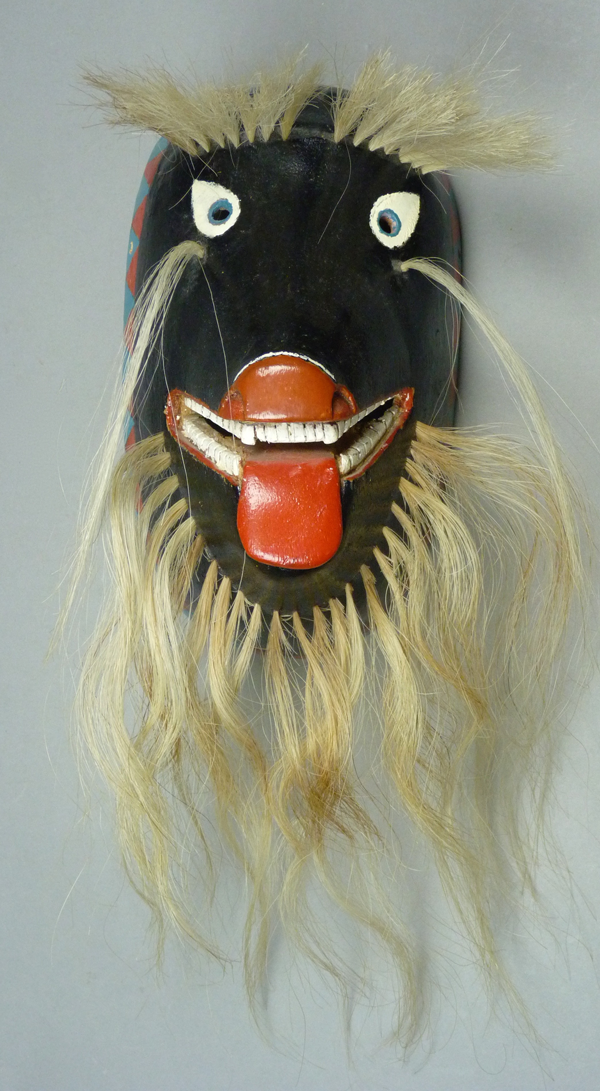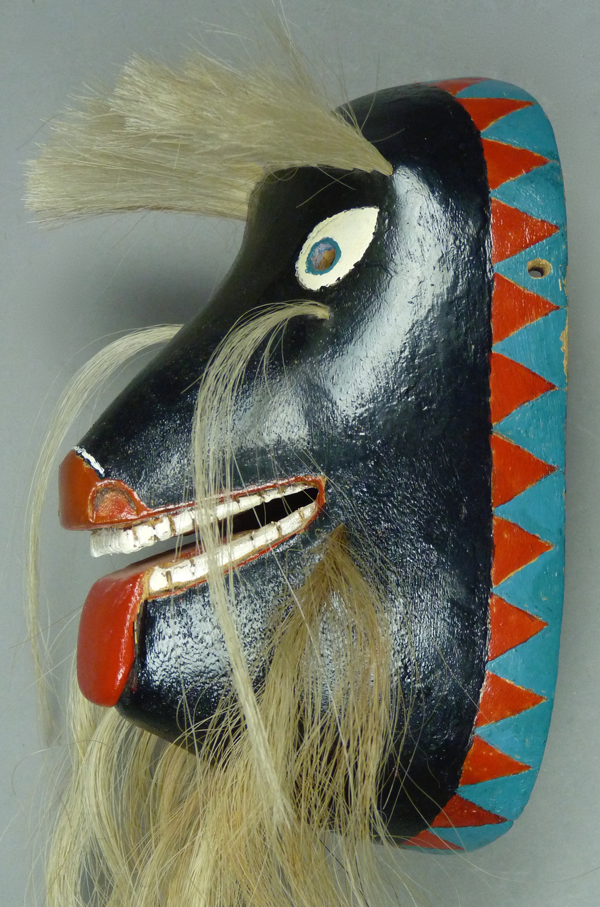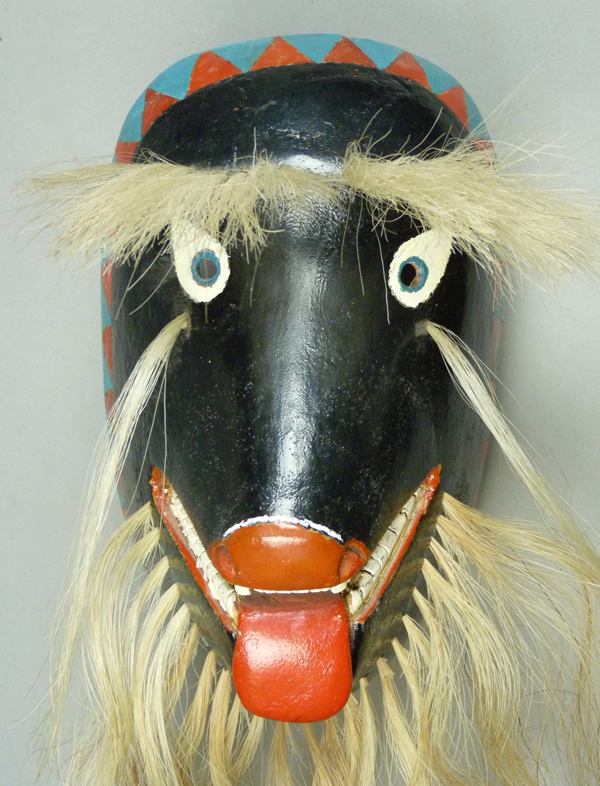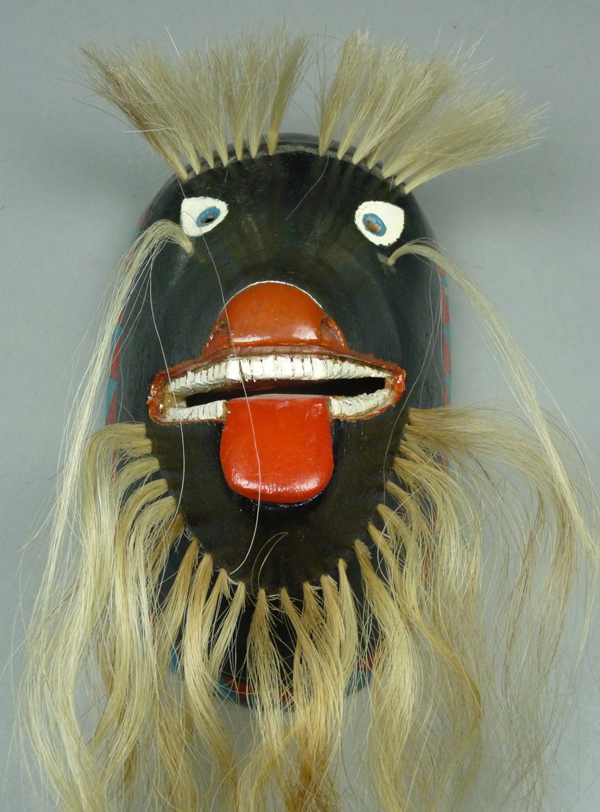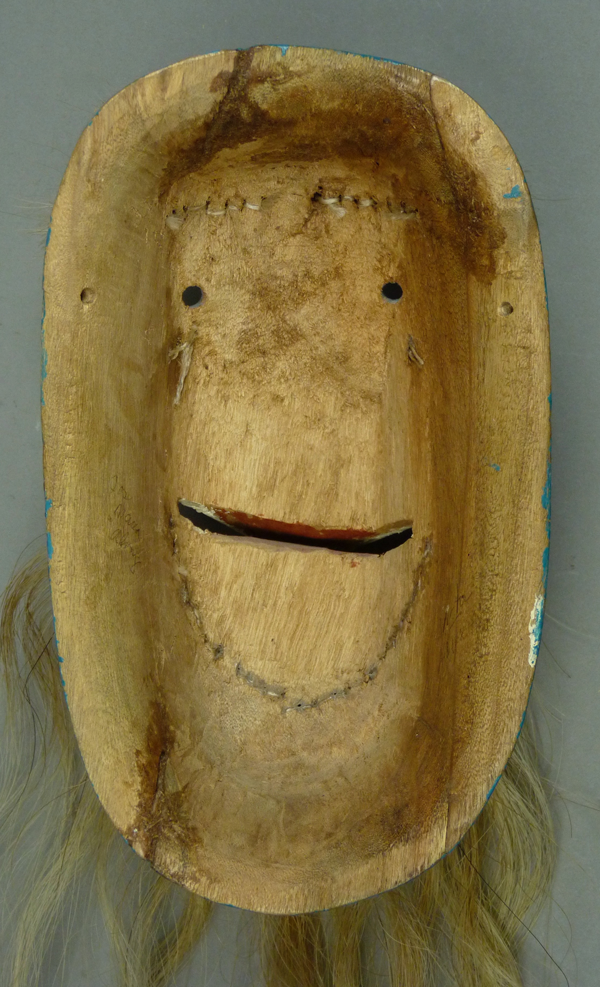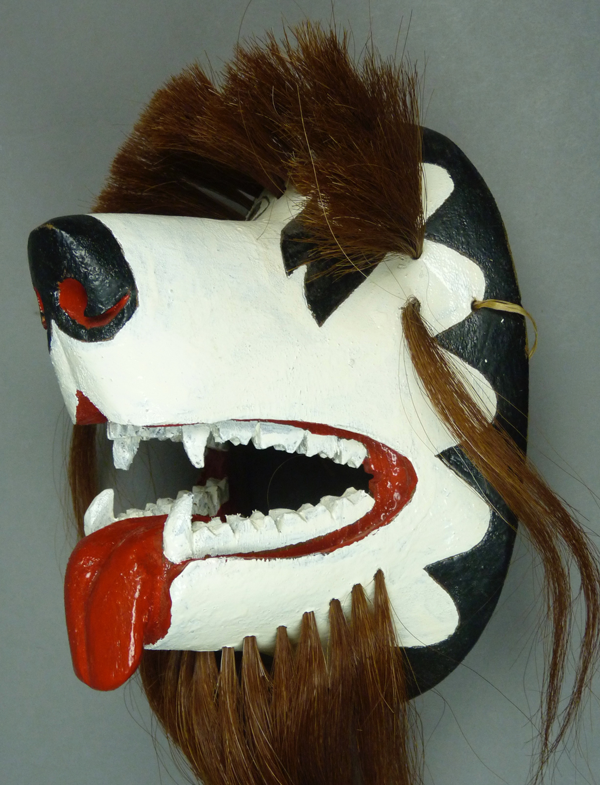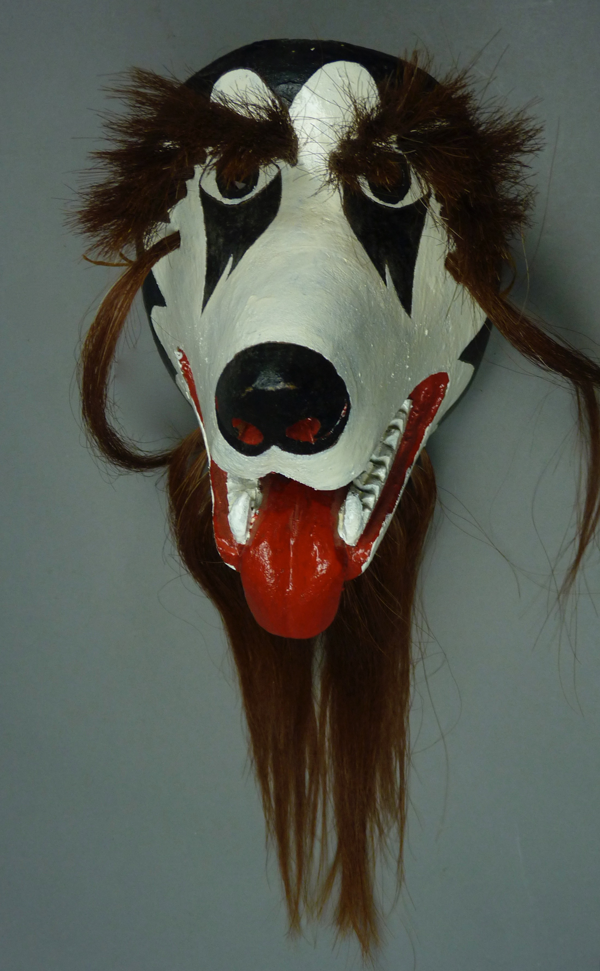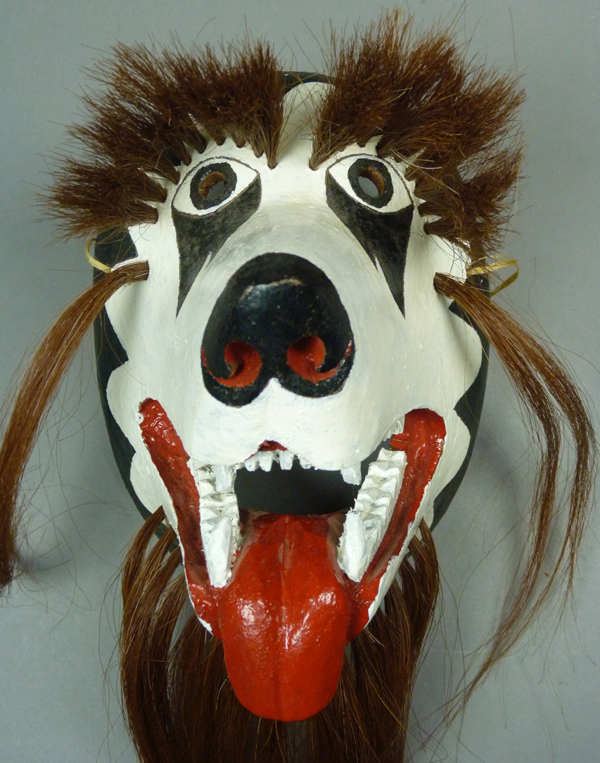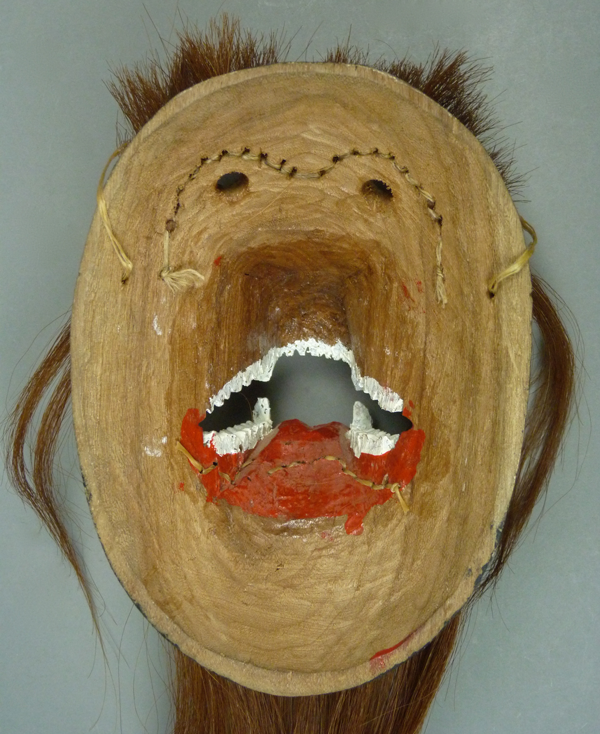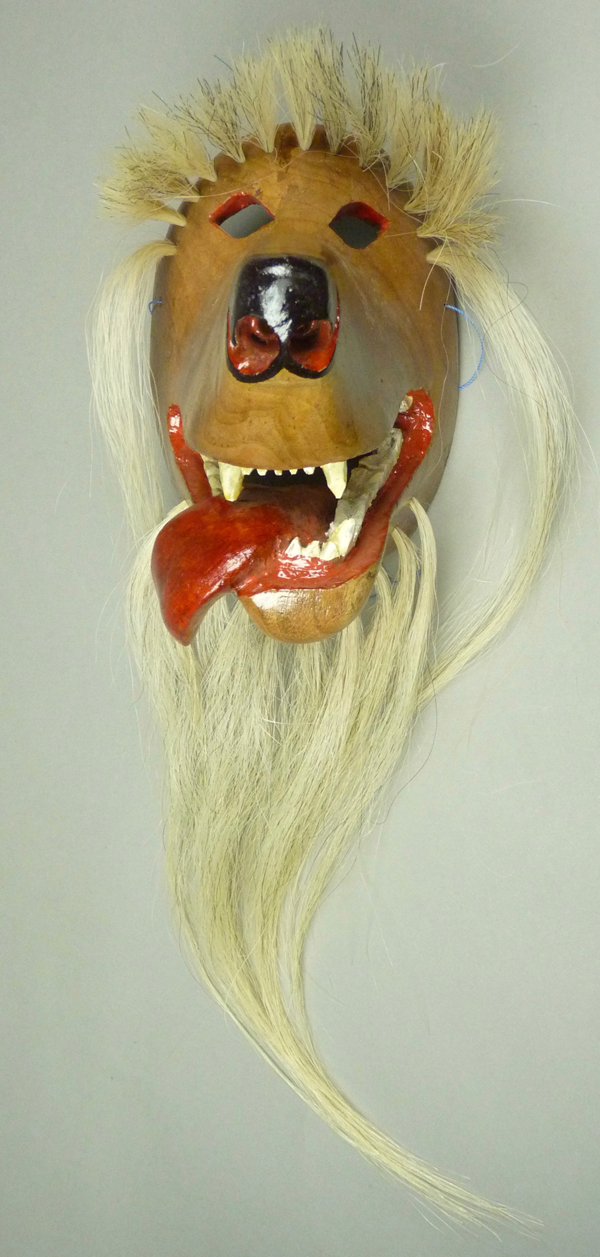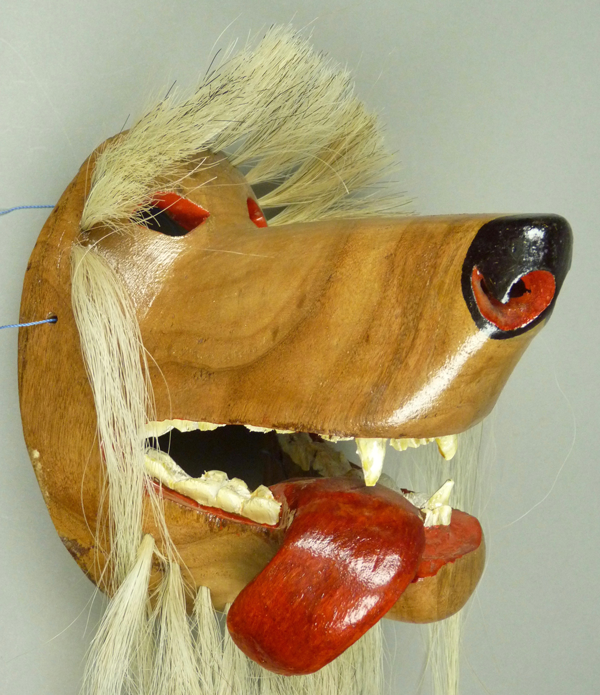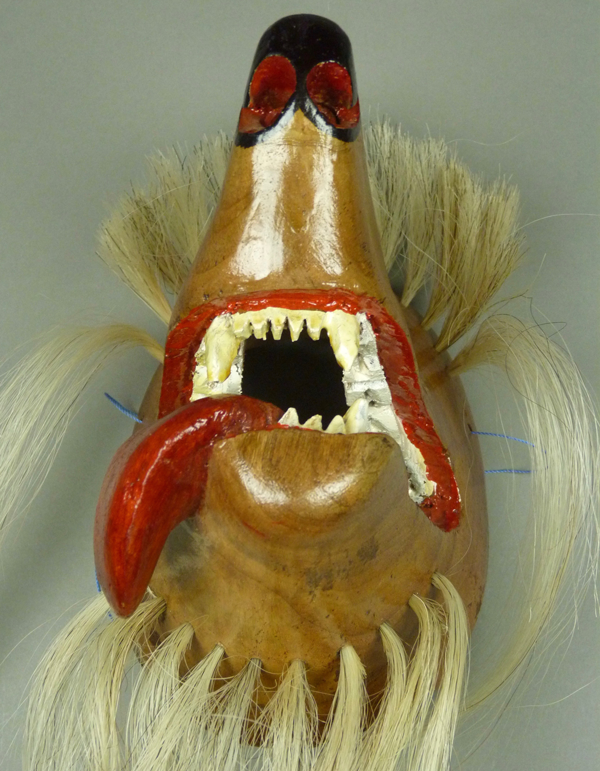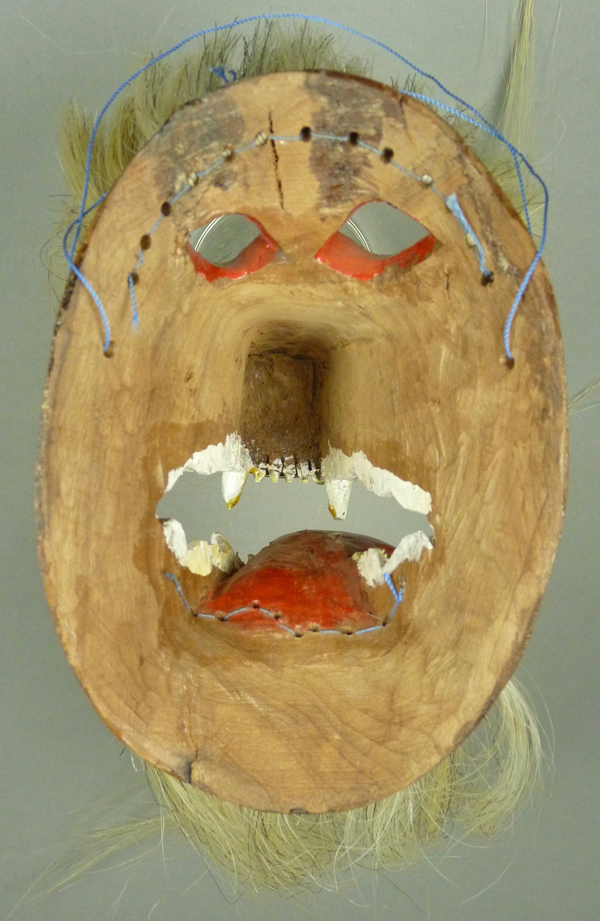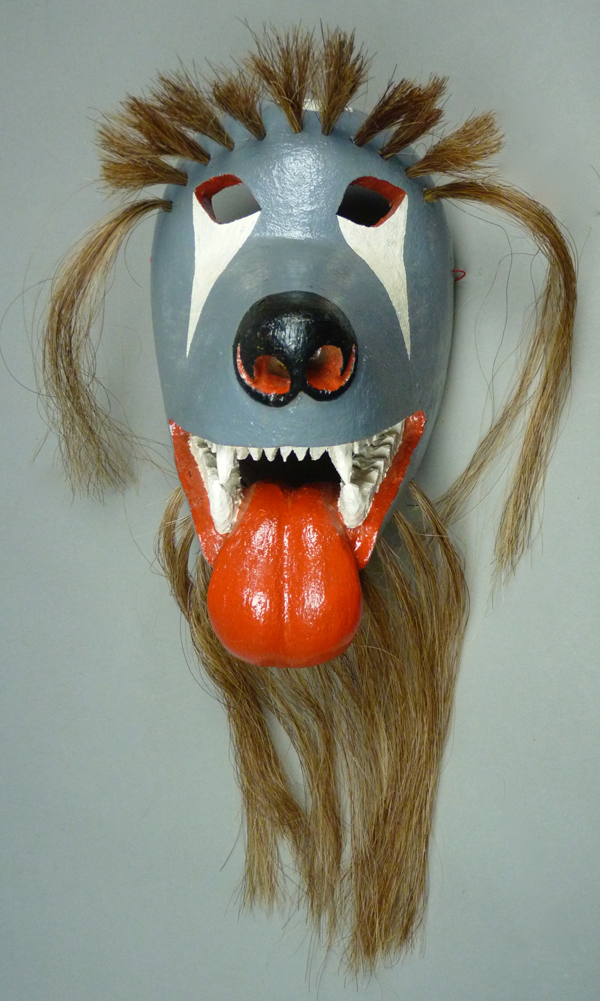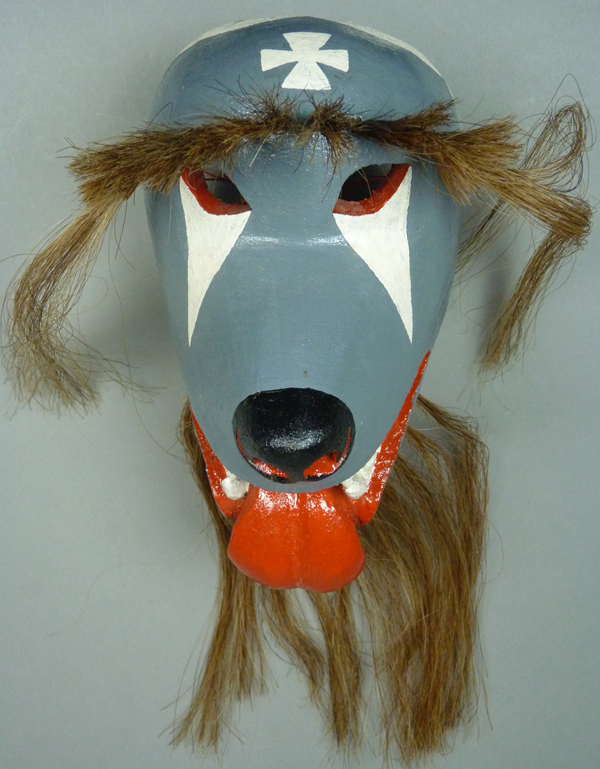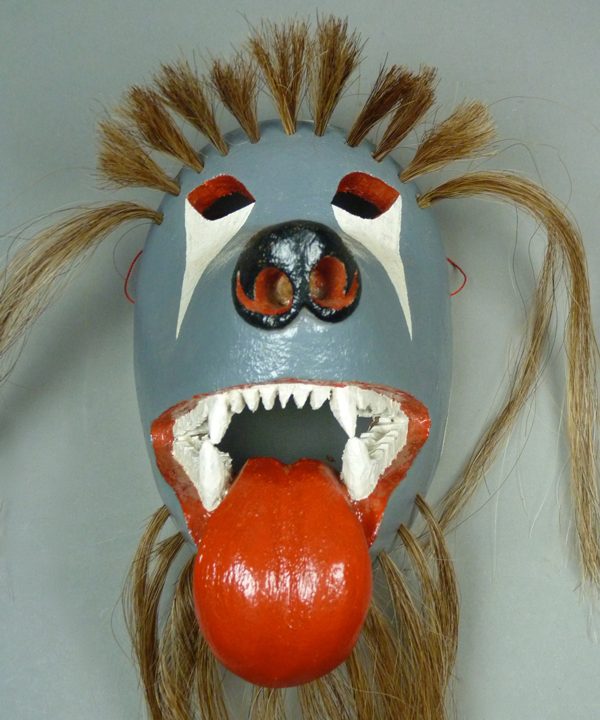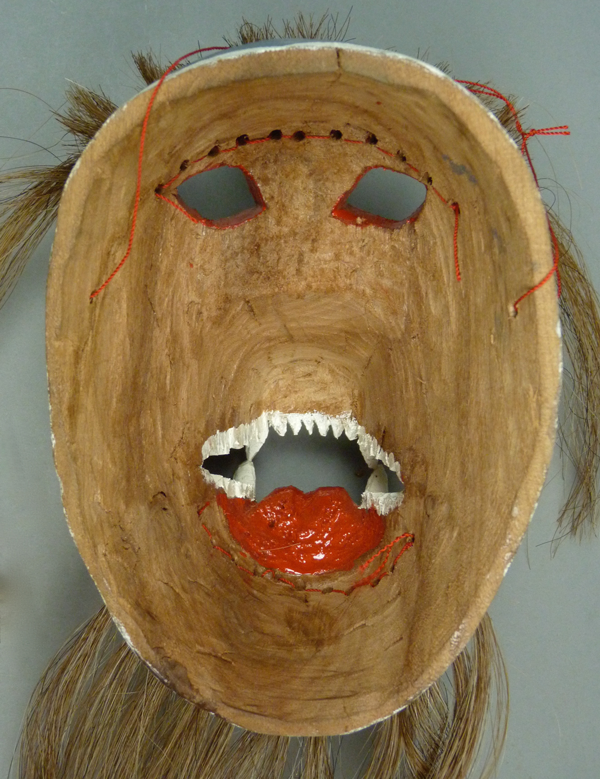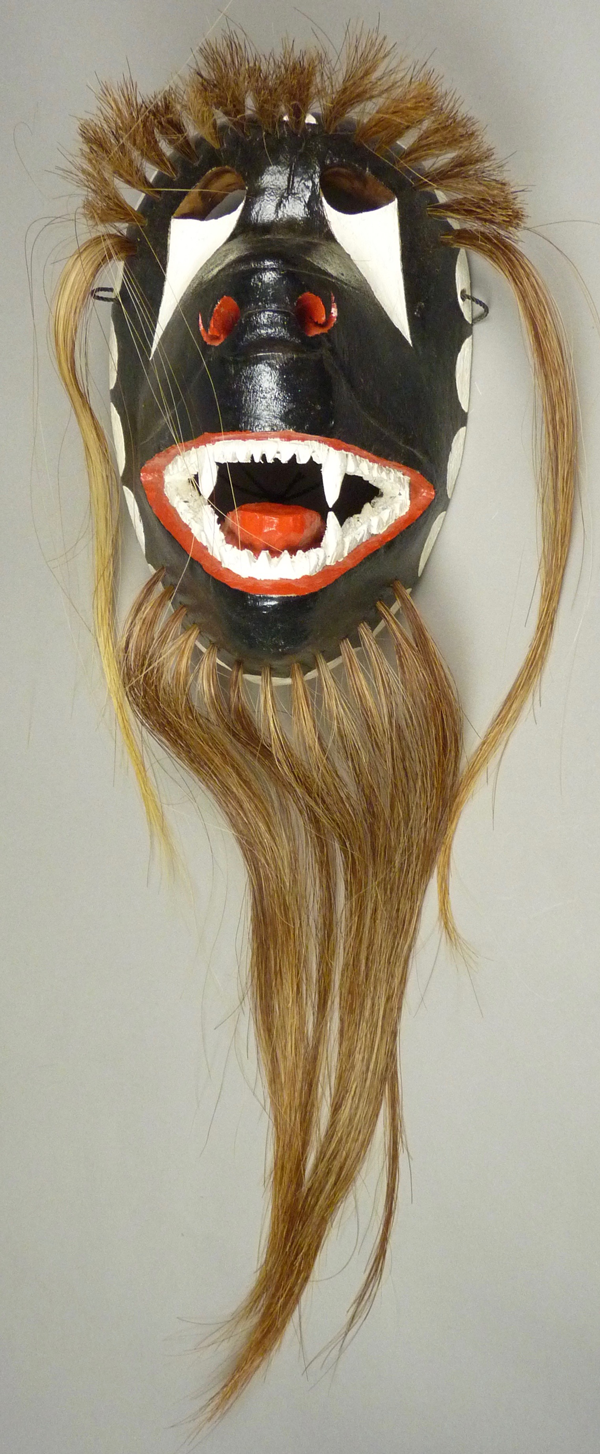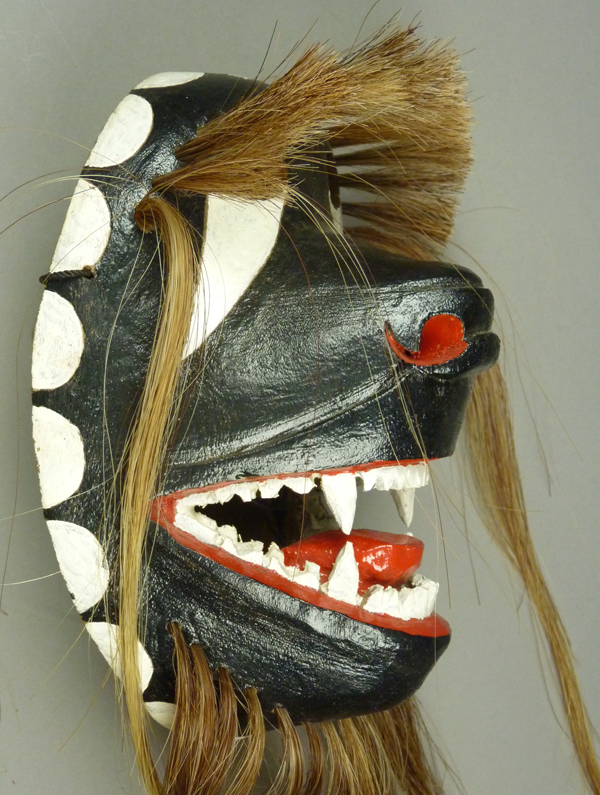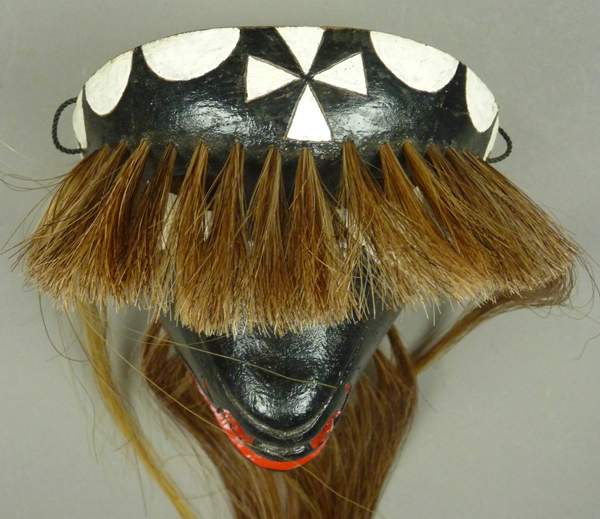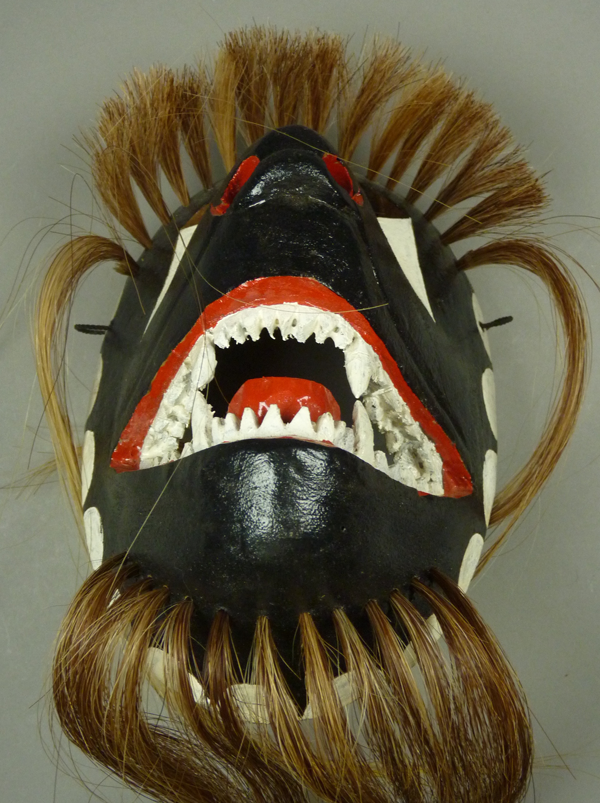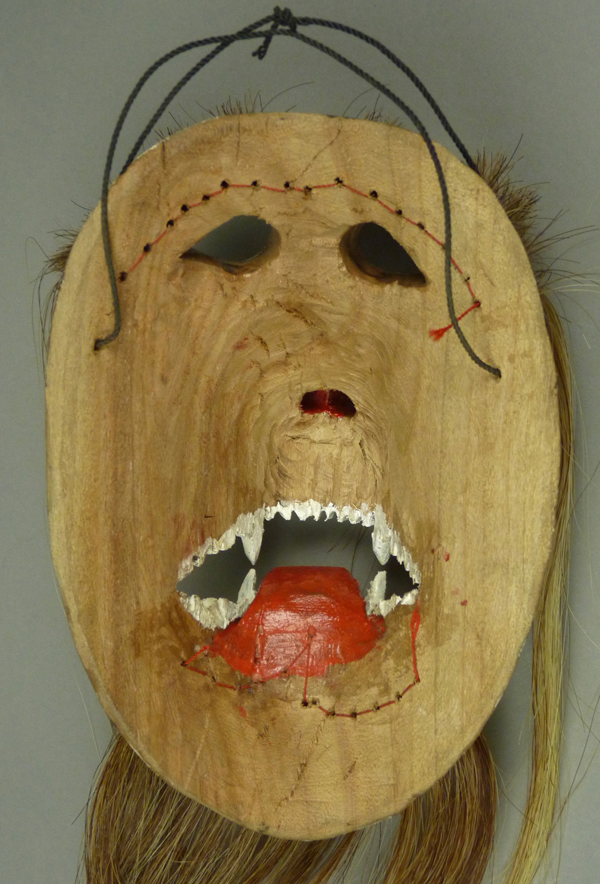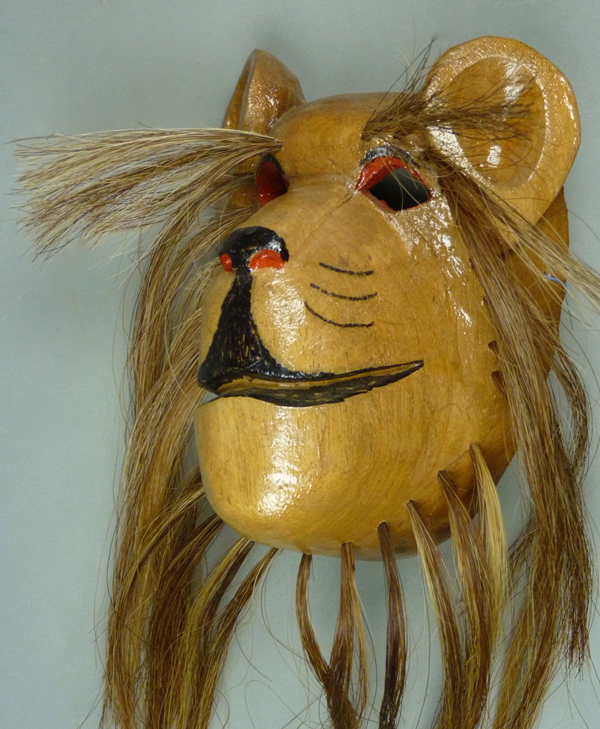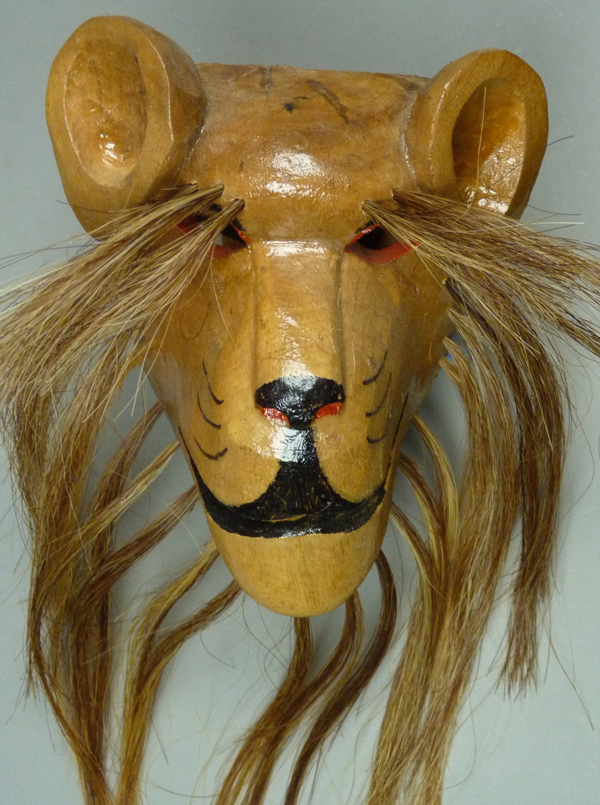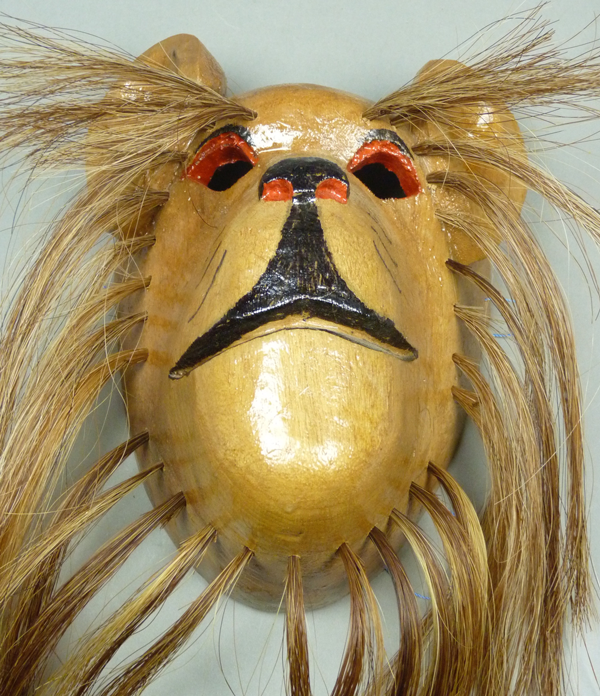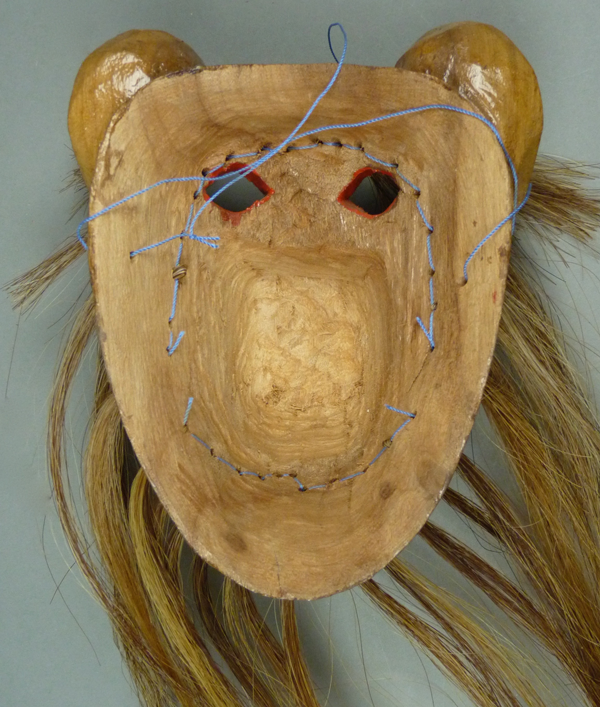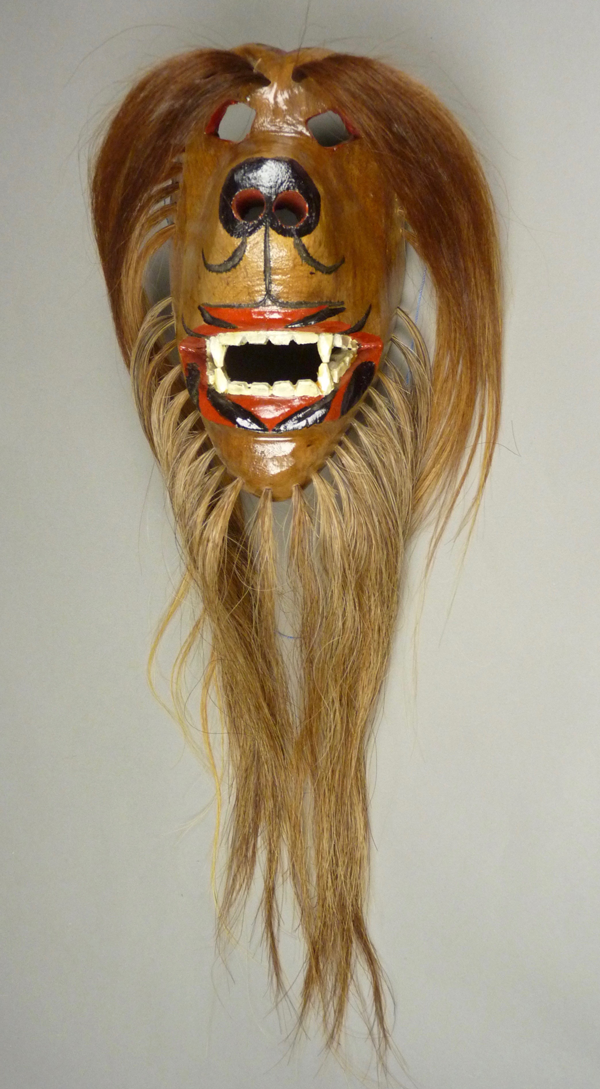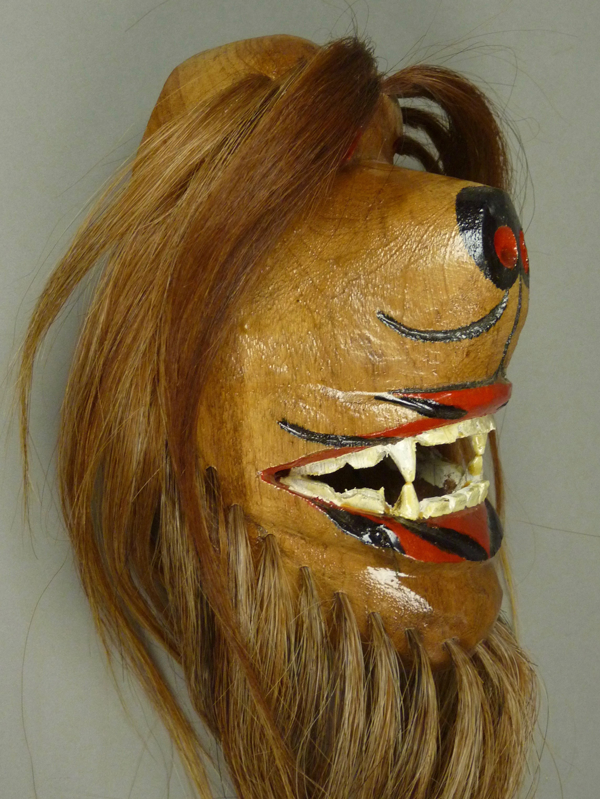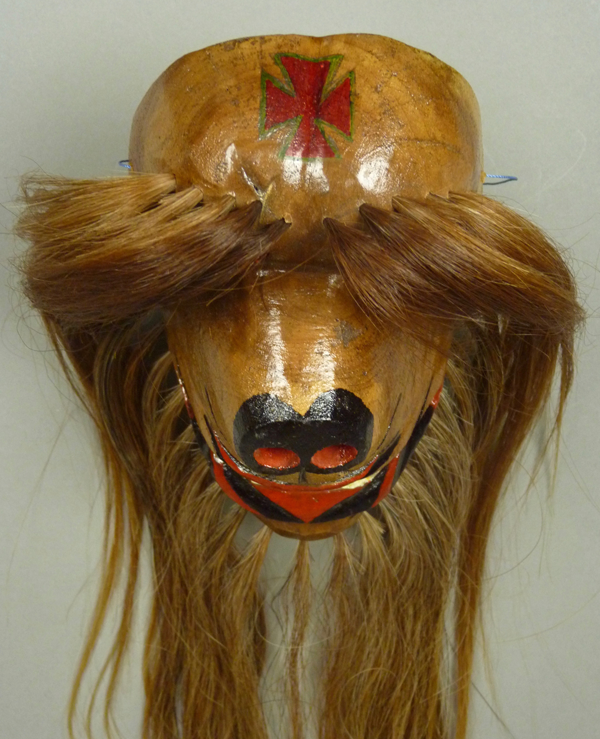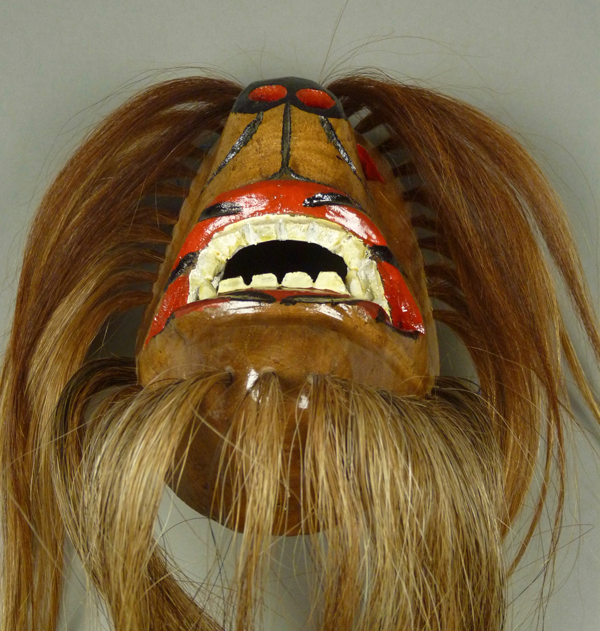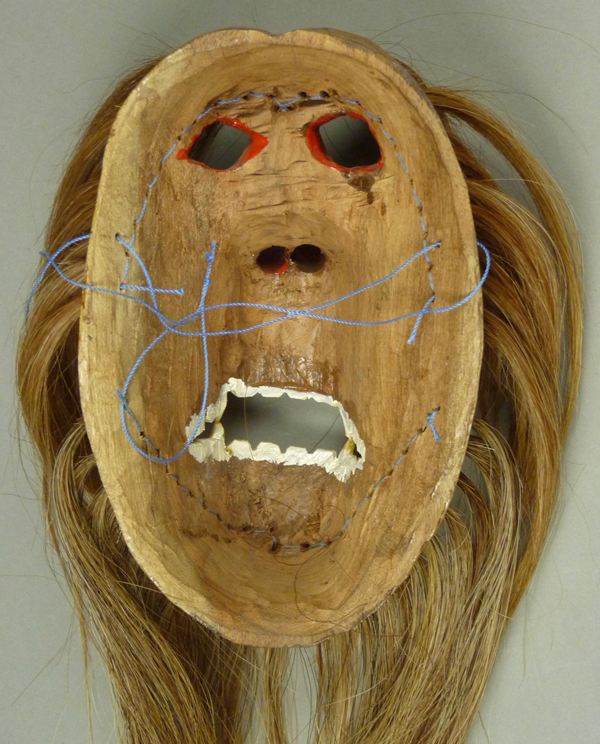I collected my first mask by Crisencio Molina Maldonado from Tom Kolaz in 1994, fully a decade before either of us had any idea of this carver’s identity or ability. Briefly, Tom purchased this Canine mask from a Yaqui “Moro” (dance troupe manager) after it had been danced in a cultural demonstration in Litchfield Arizona (outside of Phoenix) in January 1994. Because the mask had not actually been used in a formal ceremonial setting, but yet it was danced by a traditional Yaqui dancer, it fell into an unusual category. Tom offered to sell it to me because he knew of my interest in masks that were specifically carved to order for child performers. The mask had been carved by a Potam maker, “Maldonado Molina,” in 1993. Many years later it occurred to me that this was a mask by Crisencio.
This mask does have some design details that we have encountered in later masks by Crisencio. For example, the quality of the hair on this mask is very fine, with 23 tufts around the chin. The absence of any cross is a variable feature for this carver, as you will see in the masks that follow. Furthermore he likes extended tongues.
The quality of the carving is very good. I am reminded of the large and small goat masks with long noses in last week’s post.
Crisencio’s more recent masks have larger vision openings.
This mask is 7½ inches tall, 4½ inches wide, and 3½ inches deep.
There is typical staining on the back from use.
Tom Kolaz apparently “rediscovered” or became more aware of this carver in about 2004, because it was then that he collected the next mask, which he later sold to me.
This dog mask and the next have very long snouts.
There is no forehead or chin cross.
The triangles under the eyes have two points.
This mask is 7¾ inches tall, 5½ inches wide, and 4½ inches deep.
This is an undanced mask.
The next mask was carved in the same style, so it probably also dates to 2004.
The extended tongue is dramatic.
There is no forehead cross.
And no chin cross.
This mask is 7 inches tall, 5 inches wide, and 5¾ inches deep.
There is no evidence of wear.
This gray dog was carved in 2006, and then was collected directly from the carver by Tom Kolaz.
Here we see one of Crisencio’s grooved tongues,
The length of the snout is slightly less extreme, compared to the last two masks.
This canine mask does have a forehead cross.
This mask is 7½ inches tall, 5¼ inches wide, and 5½ inches deep.
This is an undanced back.
I didn’t record any information about the next mask, but I note that it greatly resembles the gray one, so I’m guessing that I got it in about 2008.
This is an attractive mask.
Crisencio’s favorite rim designs feature scallops or half circles.
This is another canine mask that does have a forehead cross, but no chin cross.
This mask is 8¾ inches tall, 5¾ inches wide, and 3¾ inches deep.
The variation in the color of the natural wood is easily seen in this photo, confirming the impression that such variation was the cause of what appeared to be staining of the rim in some of the other masks.
The last two masks in this post appear to represent “Leones” (lions). The first, which was collected in 2006, was explicitly identified to be Lion mask at the time of collection. In this Sonoran context, a “lion” is actually a puma or mountain lion.
This Lion mask lacks any representation of teeth. Mountain lions tend to slink silently and nearly invisibly in the brush, rather than roaring and showing their teeth in the manner of African lions.
There are Deer songs about Mountain Lions. In the dance that accompanies those songs, Pascola dancers wearing black Human faced masks (but turned to one side of the face) portray Mountain Lions that menace the Deer Dancer. Lion Pascola masks are a recent innovation rather than a traditional form. On the other hand, the Mountain Lion Deer songs are likely to be very old, probably from a time before the Yaquis were converted to Christianity.
This Lion has no forehead or chin cross.
This mask is 7½ inches tall, 6 inches wide, and 3¾ inches deep.
This is another undanced mask.
The very last mask may be a Lion as well. Or perhaps it is a Dog.
The hair tufts nearly circle the face, creating the sort of mane that would be found on a an African lion.
Here we see again the variation in presence or absence of the forehead cross on Crisencio’s canine masks. The previous mask lacked a cross while this mask has one on the forehead.
There is, as is common for masks by Crisencio, no cross on the chin.
This mask is 7½ inches tall, 4¾ inches wide, and 3½ inches deep.
Here is yet another back that reveals color variation in the wood, along with absence of a pattern of staining of the rim that would indicate use.
Next week we will examine masks by Crisencio that depict birds.

